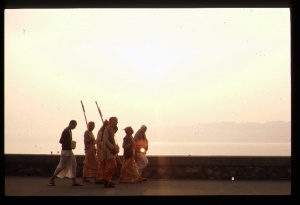CC Adi 5.120: Difference between revisions
No edit summary |
(Vanibot #0054 edit - transform synonyms into clickable links, which search similar occurrences) |
||
| Line 17: | Line 17: | ||
<div class="synonyms"> | <div class="synonyms"> | ||
''sei ta’'' | ''[//vanipedia.org/wiki/Special:VaniSearch?s=sei&tab=syno_o&ds=1 sei] [//vanipedia.org/wiki/Special:VaniSearch?s=ta’&tab=syno_o&ds=1 ta’]'' — that; ''[//vanipedia.org/wiki/Special:VaniSearch?s=ananta&tab=syno_o&ds=1 ananta]'' — Lord Ananta; ''[//vanipedia.org/wiki/Special:VaniSearch?s=śeṣa&tab=syno_o&ds=1 śeṣa]'' — the incarnation Śeṣa; ''[//vanipedia.org/wiki/Special:VaniSearch?s=bhakta&tab=syno_o&ds=1 bhakta]-[//vanipedia.org/wiki/Special:VaniSearch?s=avatāra&tab=syno_o&ds=1 avatāra]'' — incarnation of a devotee; ''[//vanipedia.org/wiki/Special:VaniSearch?s=īśvarera&tab=syno_o&ds=1 īśvarera] [//vanipedia.org/wiki/Special:VaniSearch?s=sevā&tab=syno_o&ds=1 sevā]'' — the service of the Lord; ''[//vanipedia.org/wiki/Special:VaniSearch?s=vinā&tab=syno_o&ds=1 vinā]'' — without; ''[//vanipedia.org/wiki/Special:VaniSearch?s=nāhi&tab=syno_o&ds=1 nāhi]'' — not; ''[//vanipedia.org/wiki/Special:VaniSearch?s=jāne&tab=syno_o&ds=1 jāne]'' — knows; ''[//vanipedia.org/wiki/Special:VaniSearch?s=āra&tab=syno_o&ds=1 āra]'' — anything else. | ||
</div> | </div> | ||
Latest revision as of 19:02, 19 February 2024

A.C. Bhaktivedanta Swami Prabhupada
TEXT 120
- sei ta’ ‘ananta’ ‘śeṣa’—bhakta-avatāra
- īśvarera sevā vinā nāhi jāne āra
SYNONYMS
sei ta’ — that; ananta — Lord Ananta; śeṣa — the incarnation Śeṣa; bhakta-avatāra — incarnation of a devotee; īśvarera sevā — the service of the Lord; vinā — without; nāhi — not; jāne — knows; āra — anything else.
TRANSLATION
That Ananta Śeṣa is the devotee incarnation of Godhead. He knows nothing but service to Lord Kṛṣṇa.
PURPORT
Śrīla Jīva Gosvāmī, in his Kṛṣṇa-sandarbha, has described Śeṣa Nāga as follows: “Śrī Anantadeva has thousands of faces and is fully independent. Always ready to serve the Supreme Personality of Godhead, He waits upon Him constantly. Saṅkarṣaṇa is the first expansion of Vāsudeva, and because He appears by His own will, He is called svarāṭ, fully independent. He is therefore infinite and transcendental to all limits of time and space. He Himself appears as the thousand-headed Śeṣa.” In the Skanda Purāṇa, in the Ayodhyā-māhātmya chapter, the demigod Indra requested Lord Śeṣa, who was standing before him as Lakṣmaṇa, “Please go to Your eternal abode, Viṣṇuloka, where Your expansion Śeṣa, with His serpentine hoods, is also present.” After thus dispatching Lakṣmaṇa to the regions of Pātāla, Lord Indra returned to his abode. This quotation indicates that the Saṅkarṣaṇa of the quadruple form descends with Lord Rāma as Lakṣmaṇa. When Lord Rāma disappears, Śeṣa again separates Himself from the personality of Lakṣmaṇa. Śeṣa then returns to His own abode in the Pātāla regions, and Lakṣmaṇa returns to His abode in Vaikuṇṭha.
The Laghu-bhāgavatāmṛta gives the following description: “The Saṅkarṣaṇa of the second group of quadruple forms appears as Rāma, taking with Him Śeṣa, who bears the global spheres. There are two features of Śeṣa. One is the bearer of the globes, and the other is the bedstead servitor. The Śeṣa who bears the globes is a potent incarnation of Saṅkarṣaṇa, and therefore He is sometimes also called Saṅkarṣaṇa. The bedstead feature of Śeṣa always presents himself as an eternal servitor of the Lord.”